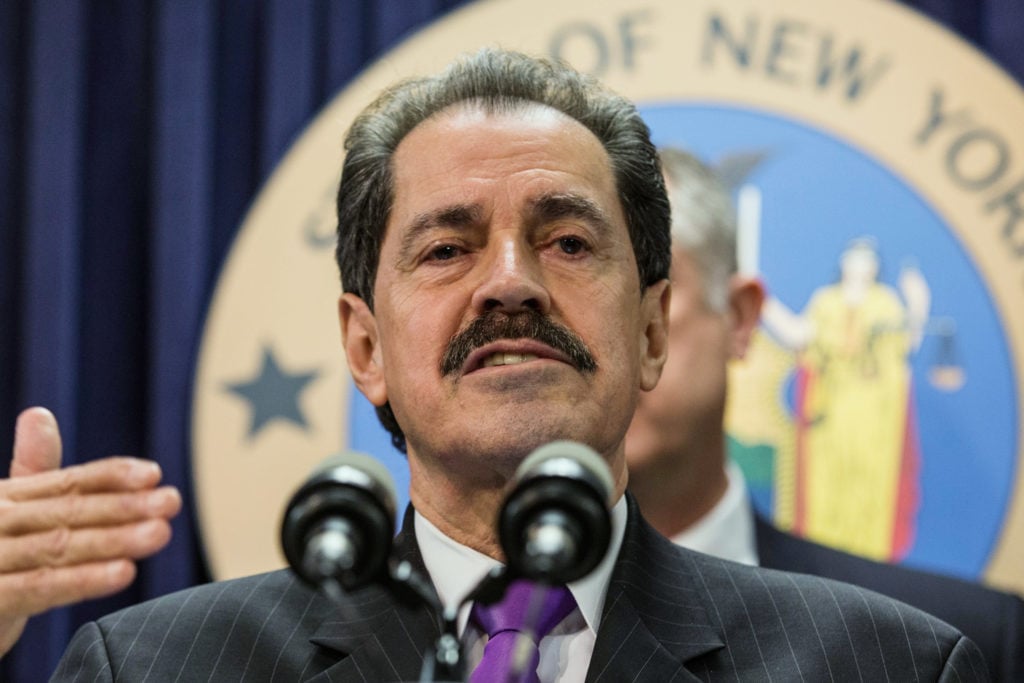Politics
The US House of Representatives Has Passed a Bill Approving a New National Museum of the American Latino in Washington, DC
The proposed museum would be part of the Smithsonian Institution and be built on the National Mall.

The proposed museum would be part of the Smithsonian Institution and be built on the National Mall.

Taylor Dafoe

The US House of Representatives has voted to approve the creation of a museum dedicated to the American Latino on the National Mall in Washington, DC.
The bill, introduced last year by Democratic Representative José E. Serrano of the Bronx, would see the creation of a National Museum of the American Latino within the Smithsonian Institution. The proposed museum would honor “Latino contributions to life, art, history, and culture in the United States,” according to the bill.
After passing the Democratic-controlled House with 295 bipartisan co-sponsors, the proposed legislation will now go to a vote in the Republican-controlled Senate.
In a statement, Representative Serrano called the bill’s approval an “important milestone for the Hispanic community with passage of this legislation.”
“Today is a proud day for the Congress and the country, as the Democratic House passes the National Museum of the American Latino Act,” House Speaker Nancy Pelosi said. “This long-overdue legislation will celebrate the contributions of generations of Latinos, acknowledging this truth: that Latino history is American history.”
The House just passed my bill, the National Museum of the American Latino Act. I'm proud to have led this bipartisan effort with @HurdOnTheHill, @RepCardenas, @RepPeteAguilar, and @JoaquinCastroTx. pic.twitter.com/nD3mJ0x9cJ
— José E. Serrano (@RepJoseSerrano) July 27, 2020
Campaigns for the creation of a national Latino museum have been in the works in Washington for more than a quarter-century. A Congressional bill commissioning a study of the feasibility of the project was introduced in 2003 and signed into law by President George W. Bush in 2008. The final study, which detailed plans for a museum on the mall, was completed in 2011.
Following the study, legislation to establish the museum was introduced in 2011 and again in 2013 and 2016, failing to pass each time.
In 1994, a Smithsonian task force found that the institution displayed “a pattern of willful neglect” toward Latinos, who made up only 2.7 percent of the organization’s workforce.
Serrano’s bill currently has 29 co-sponsors in the senate—well short of the 51 needed to pass. But for proponents of the museum, the process for swaying senators is still in its early stages.
“Today, we have the highest number of bipartisan co-sponsors since our efforts began in 1994, with 295 in the house and 29 in the senate,” Estuardo Rodriguez, president & CEO of the advocacy group Friends of the American Latino Museum, said in a statement.
“[We] now seek the leadership of the senate to get us over the finish line. With growing support from members of congress and the American public, the time to act is now.”
The House of Representatives has PASSED legislation to create a #LatinoMuseumNow! This is a historic step forward for our campaign, community, & country. On to the Senate – call your Senators TODAY and urge them to #SupportS1267! pic.twitter.com/khcf0shAnd
— Latino Museum (@latinomuseum) July 27, 2020
If the bill becomes law, it will impel the Smithsonian to establish a board of regents and find a site for the museum within two years. The institution would be responsible for securing half of the funding for the development of the museum, while the government will foot the rest.
Establishing the museum would cost an estimated $700 million, including building costs, according to the Hill. The last such venue constructed on the Mall, the National Museum of African American History and Culture, cost roughly $540 million.
“Latinos have been contributing to the building, shaping, and defending of our nation since before its founding, but these indispensable stories of American history have largely been absent from our magnificent museums on the national mall,” said Danny Vargas, chairman of the Friends of the American Latino Museum board.
“Now we stand at the precipice of enshrining an enduring institution that will fill the missing pages from our history books and inspire countless future generations to come.”